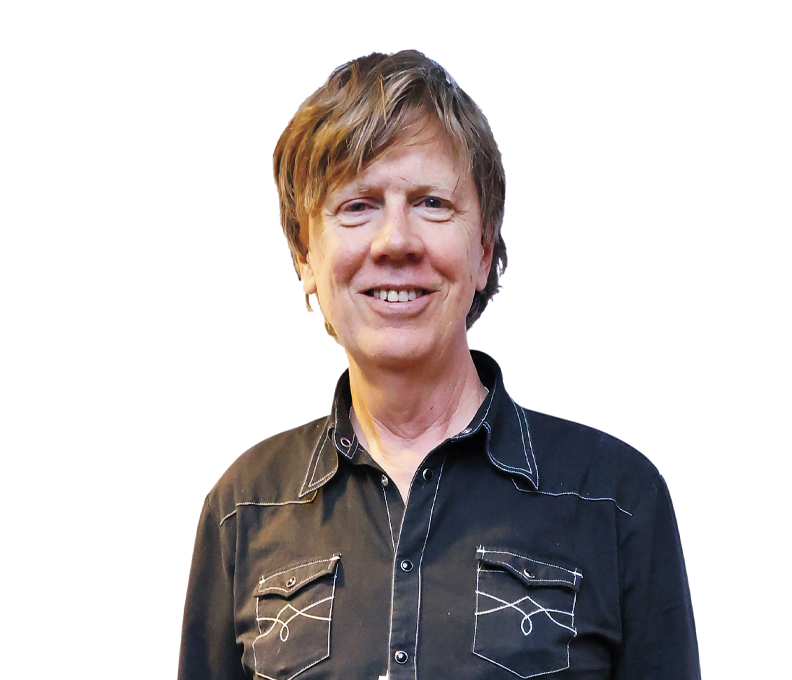Icelandair CEO Bogi Nils Bogason: His Airline’s Niche Allure
Plus, his plans for growth as the country becomes a global destination
April 24, 2023
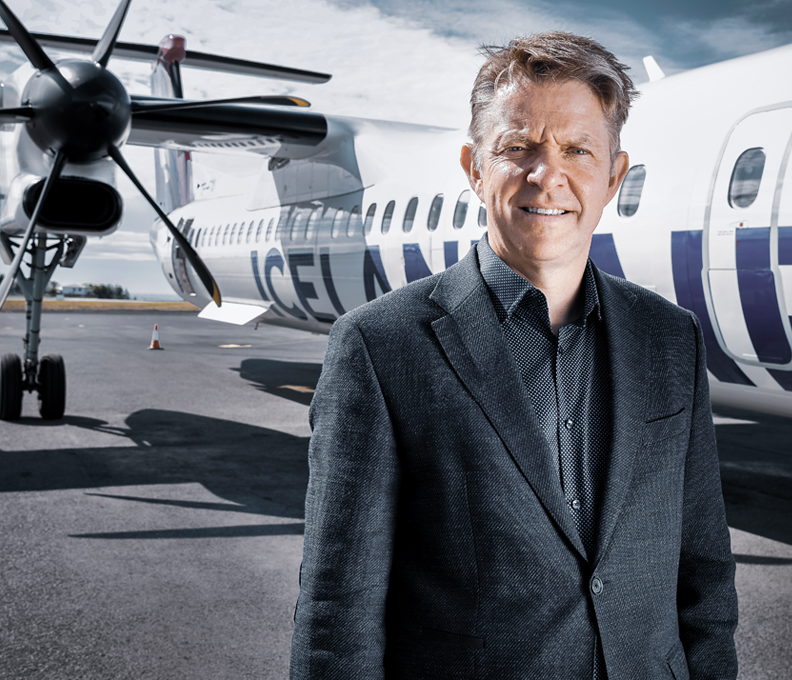
Icelandair CEO Bogi Nils Bogason / Photo: Courtesy of Icelandair
Up in Iceland, where winds and temperatures are harsh and change rapidly, running an airline and keeping it profitable is no easy task—let alone during a pandemic. But the country’s flag carrier, Icelandair, has found a clever way of doing business, capturing a small stake of the world’s most crowded and competitive markets while keeping its numbers in the black.
Icelandair offers customers an astute stopover program, inviting passengers to travel between North America and Europe by making a tourist stop in Iceland. This strategy has benefited the airline with high load factors and boosted tourism in one of the world’s most spectacular destinations. In Reykjavík, Bogi Nils Bogason, president and CEO of the Icelandair Group, sat down with Business Traveler to discuss Icelandair’s path through the pandemic and what seems to be an optimistic future.
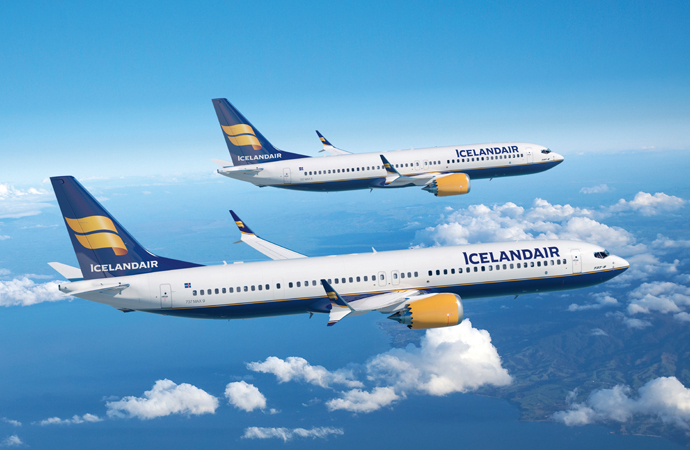
737 MAX 8 and 9 aircraft / Photo: Boeing/Ed Turner
After a successful career as an auditor and accountant at KPMG, Bogason reached the top position at Icelandair in 2018. “It wasn’t easy,” he said. “As soon as I was named CEO, the global grounding of the Boeing 737 MAX affected our network heavily. And when we came out of that crisis, the pandemic arrived.”
Bogason found himself battling an unprecedented crisis in the aviation industry. The small island in the North Atlantic couldn’t escape the terrible effects of the pandemic, forcing its flag carrier to ground planes, lay off employees, and enter an uncertain hibernation mode until global travel picked up again. “It was a big challenge for us,” he said. “With the help of the Icelandic community and government, we made it through. Our team did great.”
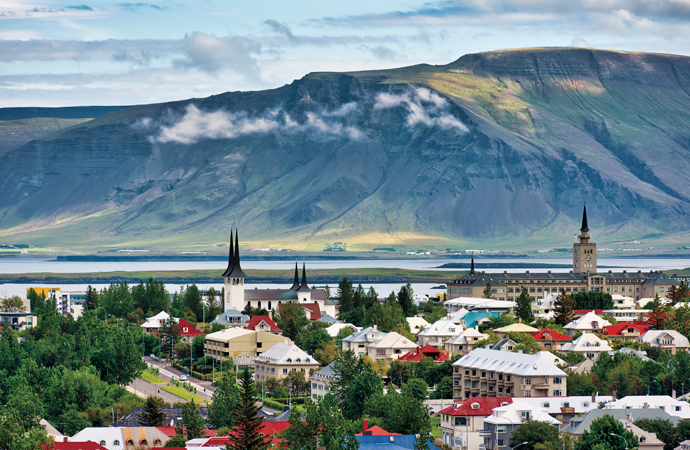
Reykjavík, Iceland / Photo: Harald Nachtmann/Moment/Getty Images
With tourism flowing in Iceland and load factors returning to healthy numbers, the CEO said his team has “found a way of running an airline in the middle of the Atlantic” and is confident enough to add that they “are pretty good at it.” But he’s aware of two significant challenges: imminent fleet upgrades and competition.
Icelandair operates an all-Boeing fleet of five 767-300ERs, 21 757-200/300s, and 16 new 737 MAX 8/9s. The airline heavily scrutinized the MAX planes—its current backbone—to see whether they’d properly replace its historic workhorse, the 757. “Within the next two months, we will decide whether to replace the 757 with more Boeing planes or go with the Airbus option,” Bogason said. “We are not waiting for Boeing—we issued a request for proposals in the fourth quarter of last year, and we should be making a decision soon.”
When Boeing abandoned its plans to develop a new middle-of-the-market airplane, the world’s operators of the 757 found themselves having to look elsewhere for an apples-to-apples substitute. So, carriers such as American Airlines switched over to Airbus and ordered the A321neo, something Bogason and company pondered.

Photo: Courtesy of Enrique Perrella
According to him, the 757 is his favorite plane because it gives him the flexibility to operate routes efficiently. For example, it can fly routes as short as a domestic hop from Keflavík to Akureyri or as long as an eight-hour journey between Reykjavík and Seattle—something the 737 MAX can’t do. “The 737 MAX has been overperforming,” he said. “The plane is doing better for us than Boeing said it would do. We are stretching its range to Denver and Orlando. But it’s still limited compared to the 757’s performance.”
The Airbus A321neo LR (long-range) and XLR might properly replace Icelandair’s 757. But it would be a big decision for so small an airline to make such a significant change. The carrier’s pilots—type-rated on the 757/767 and 737 MAX—would have to retrain and switch to the Airbus philosophy. It would not only be a cost-adverse choice for the airline but also require “at least ten years to replace with an all-Airbus lineup,” according to Bogason.

Icelandair_plane / Photo: Uwe Deffner/Alamy Stock Photo
The 757 isn’t the only plane needing replacement, though. “The wide-body 767s are also close to retiring. And if we decide to stay with Boeing, the natural replacement for this plane would be the 787,” he said. The Dreamliner would provide higher passenger capacity, longer range, a better passenger experience, and dramatic fuel-burn improvements. “But going with that option would require us to make a choice—Boeing or Airbus.”
The imminent fleet change decision, like domestic and foreign competition in Iceland, approached rapidly. Even though Bogason seems at ease with Iceland’s new low-cost carrier, Play, and the influx of foreign airlines bringing herds of tourists to the country, he’s well aware of them.
Play offers flights to similar destinations at a fraction of the cost. Still, Bogason believes his product mix is “more complete”—a business class, a successful stopover program, and affordable prices. “We are right in the middle of the market,” he explains. “We have a business class cabin unique in Europe, but don’t offer lie-flat seats like some North American carriers do.”
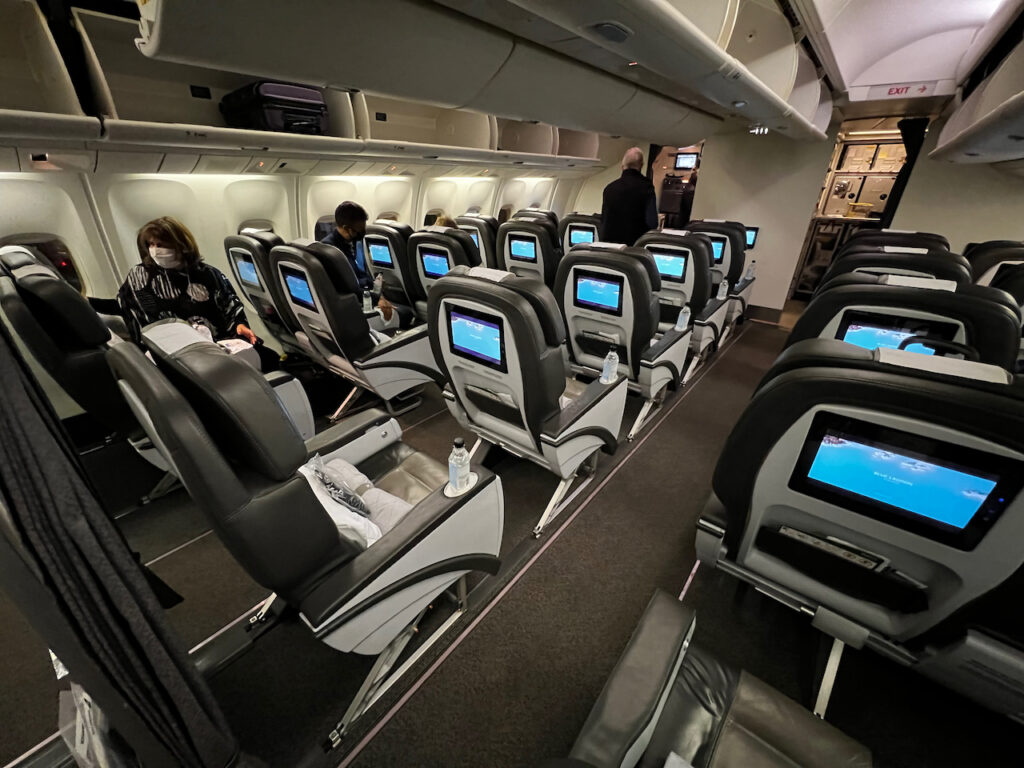
Photo: Icelandair, Boeing 767-300ER Saga Premium. Courtesy of Enrique Perrella.
Regarding Icelandair’s future network, the CEO sees his airline increasing frequencies on its current routes to Europe and North America rather than opening new destinations. Although he doesn’t rule out adding Miami and some other U.S. cities to its network soon, the immediate plan is to consolidate, strengthen and increase its current network presence. “We are also building up an air freight connecting operation here in Iceland,” he said, adding some weight to the airline’s future fleet decision.
Bogason sees Icelandair holding a prime position by offering a niche product with attractive tourism and low-cost appeal. Passengers can take a leisurely trip across the Atlantic on a reliable carrier, often at lower prices than the competition offers, and arrive on time.
The decision to go with Boeing or Airbus will determine Icelandair’s long-term future. Happily, Bogason and company are strong-minded professionals seeking sustainable growth for one of the most noteworthy airlines globally.
Update:
In April, Icelandair chose the replacement of the Boeing 757. The Icelandic carrier signed a Memorandum of Understanding with Airbus to acquire 13 A321XLR planes with the option to order a further 12.
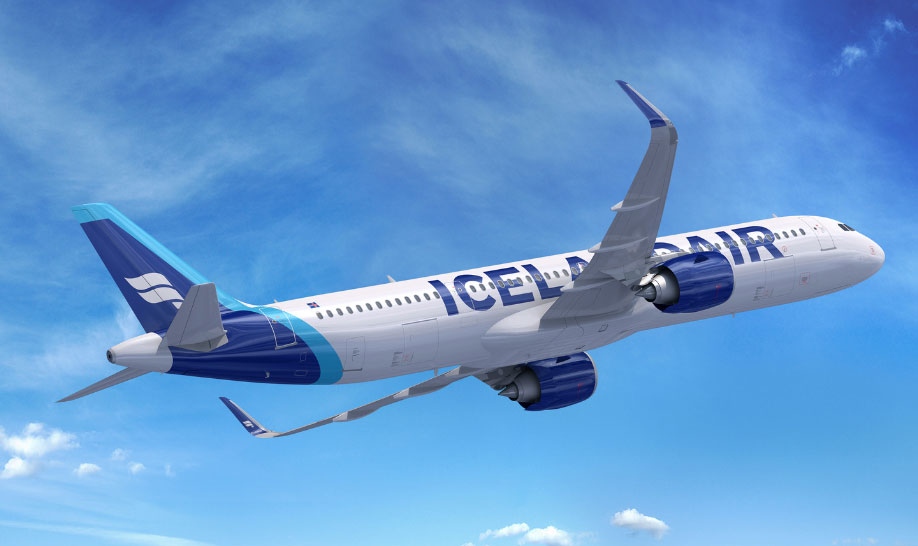
Photo: Courtesy of Airbus
With its choice of acquiring the Airbus long-range narrowbody, the airline plans to transition to the European planemaker over the next few years to boost its sustainability and reduce its overheads. On top of the order for up to 25 A321XLRs, Icelandair is currently negotiating to acquire four leased Airbus A321LRs, which the carrier expects to start receiving in 2025.
“We are happy to announce that we have now reached a conclusion regarding Icelandair’s future fleet,” said Nils Bogason in a press release. “We have decided that the capable and fuel-efficient Airbus aircraft, A321XLR and A321LR, will become the successors of the Boeing 757 we are gradually retiring.”
“The Boeing 757 has been the cornerstone of Icelandair’s operations since 1990. Its unique capabilities have underpinned the successful development of our extensive route network and competitive transatlantic hub by leveraging Iceland’s unique geographical location to connect North America and Europe via Iceland.”


